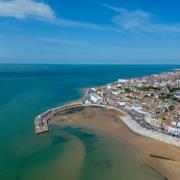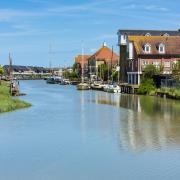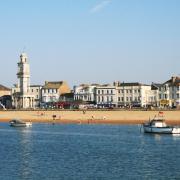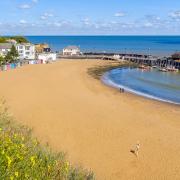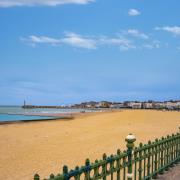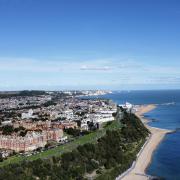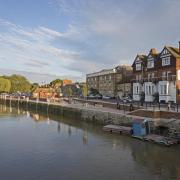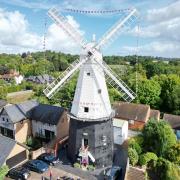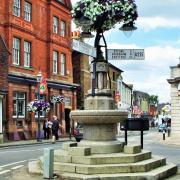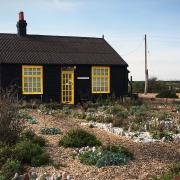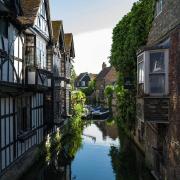There may not be the usual crowds this summer, but we can still look ahead to our return to one of Kent’s favourite seaside destinations - Whitstable

History
First recorded in the Domesday Book as ‘Witenestaple’, meaning ‘the meeting place of the white post’, this remarkable coastal town was known as Whitstaple until the name morphed again in the early 1200s. Set in the borough of Canterbury, between Seasalter and Tankerton, it has long been one of Kent’s favourites.
It’s fair to say that Whitstable has changed a great deal in the last 20 years. Once a sleepy fishing village, it has blossomed into a fashionable destination for day trippers and second home owners.
Now nationally recognised for its high-end independent shops and restaurants – and we’re hoping as many as possible survive lockdown and the economic downturn – it’s a far cry from its industrial fishing heritage.
But that’s not to say there isn’t still a working harbour in Whitstable. While restaurants and art stalls may have sprung up around the harbour walls, it’s still true to its roots. Clunky fishing vessels unload their hauls into black timber sheds, with a portion of the catch sold directly to customers at the fish markets. And harbour visitors can’t miss the industrial aggregate works nearby.
Whitstable is undoubtedly most famous for a certain bivalve that grows particularly well in its shallow waters – the native oyster. In fact, the town owes its very existence to this humble sea creature.
First discovered by the Romans, who had a large settlement at nearby Canterbury, the local oysters became such a delicacy they were shipped in their thousands back to Rome.
The industry went from strength to strength and The Whitstable Oyster Company, which is still a major presence in the town today, was created in 1793. It peaked in around 1865 when oysters were a popular Victorian fast food, with more than 100 boats in the company’s oyster fleet.
So famous is its seafood that the town usually celebrates with the annual Whitstable Oyster Festival each summer, but it’s yet another event that is taking a year off due to the pandemic – along with Whitstable Harbour Day.

Another important point in the town’s history came in 1830, when the world’s first steam-hauled railway service was opened by the Canterbury and Whitstable Railway Company. The line ran only six miles, from Canterbury’s Westgate to Whitstable town centre, and soon earned the nickname the ‘Crab and Winkle Railway’. Today that nickname is remembered thanks to the popular Crab and Winkle Way cycle route.
Best bits
Away from the town centre, it’s all about the beach. The pebble beach at Whitstable stretches all the way to Seasalter in one direction and through Tankerton towards Herne Bay in the other, marked all along by its famous black groynes.
Tankerton Slopes is a lovely place for a picnic, with grassy banks rolling down to a long and often quiet beach. Meanwhile, the main town beach is usually busy in the summer, with food shacks and pubs opening directly out onto it – although it’s likely to be different this summer.
Further on is the iconic Neptune pub, right on the beach itself, and just after is the start of the popular West Beach.
Whitstable Yacht Club has its club house on the western side of the harbour, with dozens of catamarans and dinghies on the beach. You can often spot kite surfers, water-skiers and surf boarders on the water.
Magnificent Whitstable Castle sits on the hill between Whitstable and Tankerton. Originally a family home, built in the 1790s in the style of an ancient castle, the house eventually became the local council offices and later a community event venue. The Whitstable Castle Trust now runs the castle and it’s a popular wedding venue with its Orangery Tea Rooms open to the public.
Developments
With so many plans up in the air and some building developments having been on hold during lockdown, it’s hard to predict what effect it will have. But in the works at the time of writing were the redevelopment of South Quay Shed in the harbour – a huge space being broken into eateries and retail units – and the Old Engine Shed being turned into a restaurant. Plans have also been afoot to either build a boutique cinema venue into the South Quay Shed or to convert a former cockle shed near the entrance to West Quay.
Celebrating local coronavirus heroes
Red Zebra: This community solutions group in Whitstable has been co-ordinating the local response during the outbreak. Working with other community groups, it can offer emergency food parcels, deliveries, support over the phone and advice on what agencies are still available to the vulnerable and isolated. Visit redzebra.org.uk
Canterbury City Council: The council has launched a community hub, with volunteers offering help with food shopping, collecting prescriptions or just a friendly phone call. Visit canterbury.gov.uk
Whitstable Mutual Aid: This Facebook group puts residents in touch with each other – to ask for or to offer help, share creative projects and tackle feelings of isolation. Search ‘Whitstable Covid-19 Mutual Aid’.




